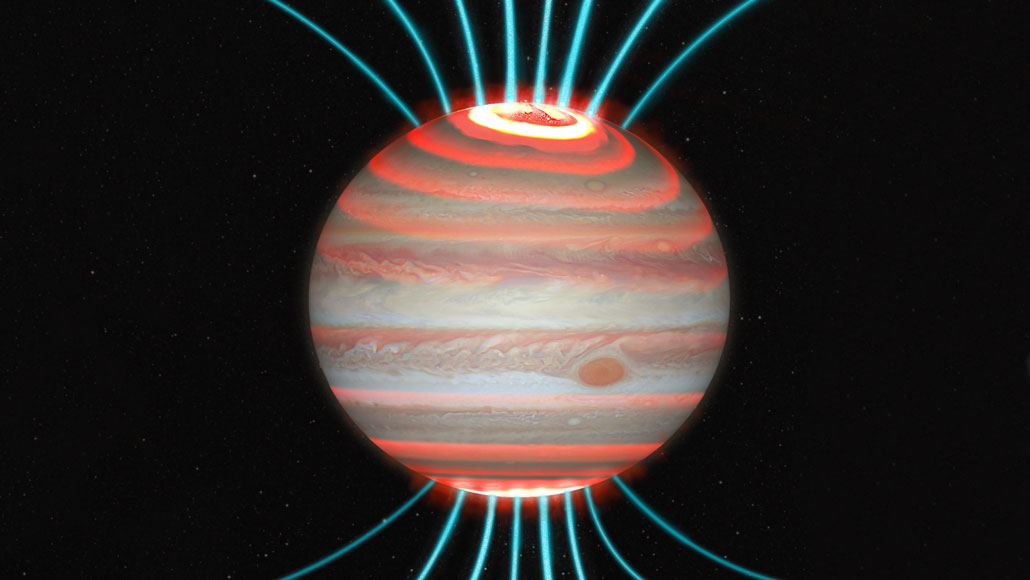
Jupiter’s magnetic field lines (blue) steer charged particles in the solar wind toward the planet’s poles, generating auroras (white) similar to Earth’s. High-altitude winds then carry heat (red) from the auroras toward Jupiter’s equator, warming the planet’s upper atmosphere, as shown in this artist’s illustration, which overlays a visible light image of the planet.
J. O'Donoghue/JAXA, Hubble/NASA, ESA, A. Simon, J. Schmidt







